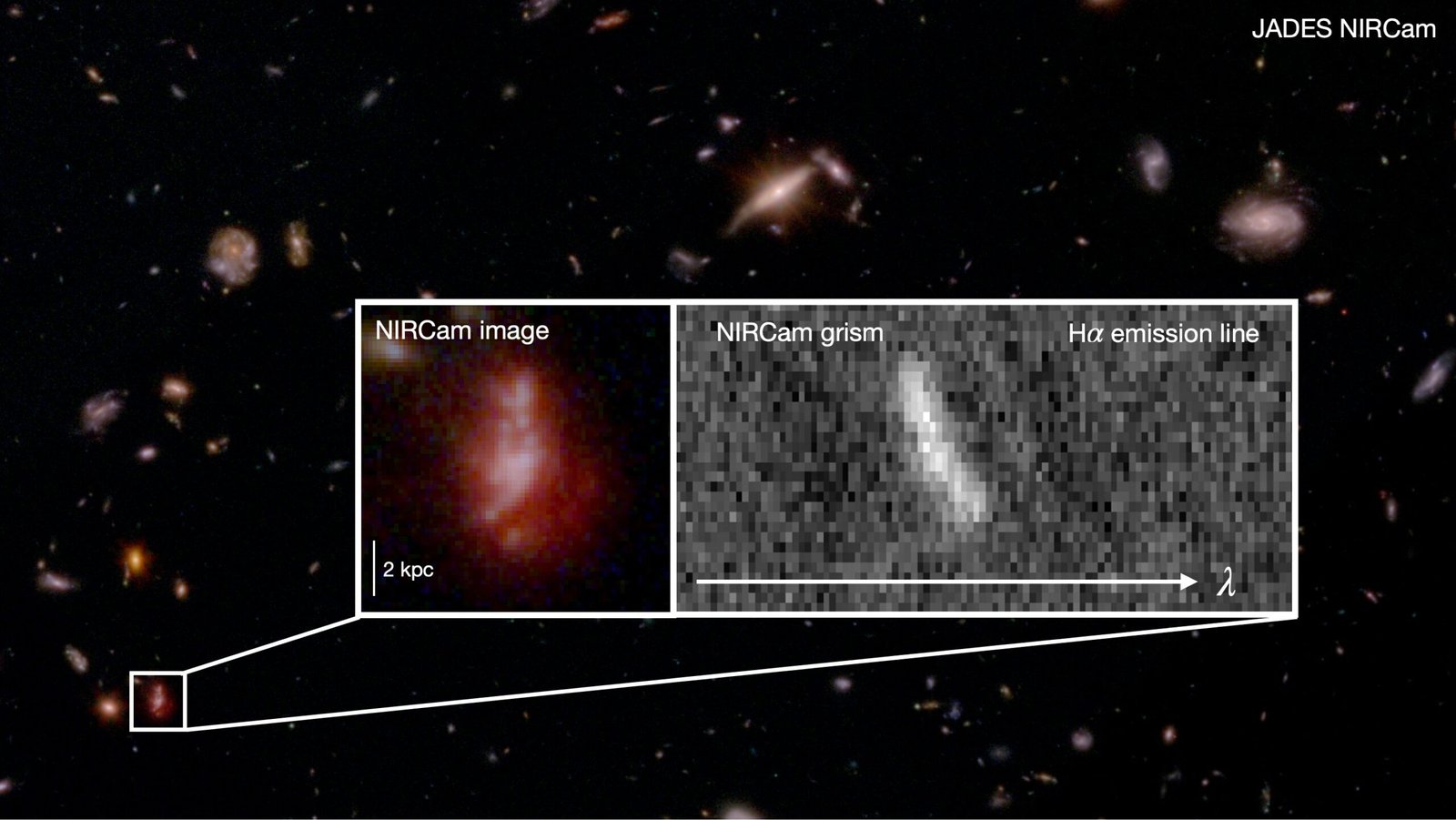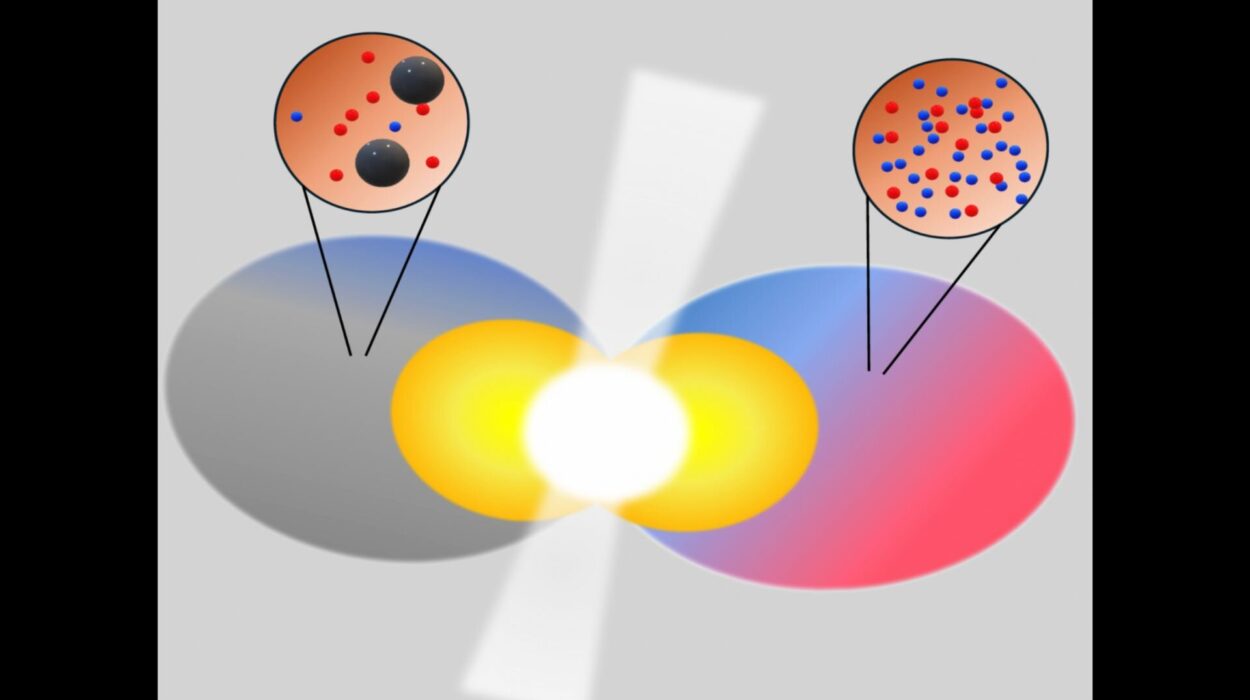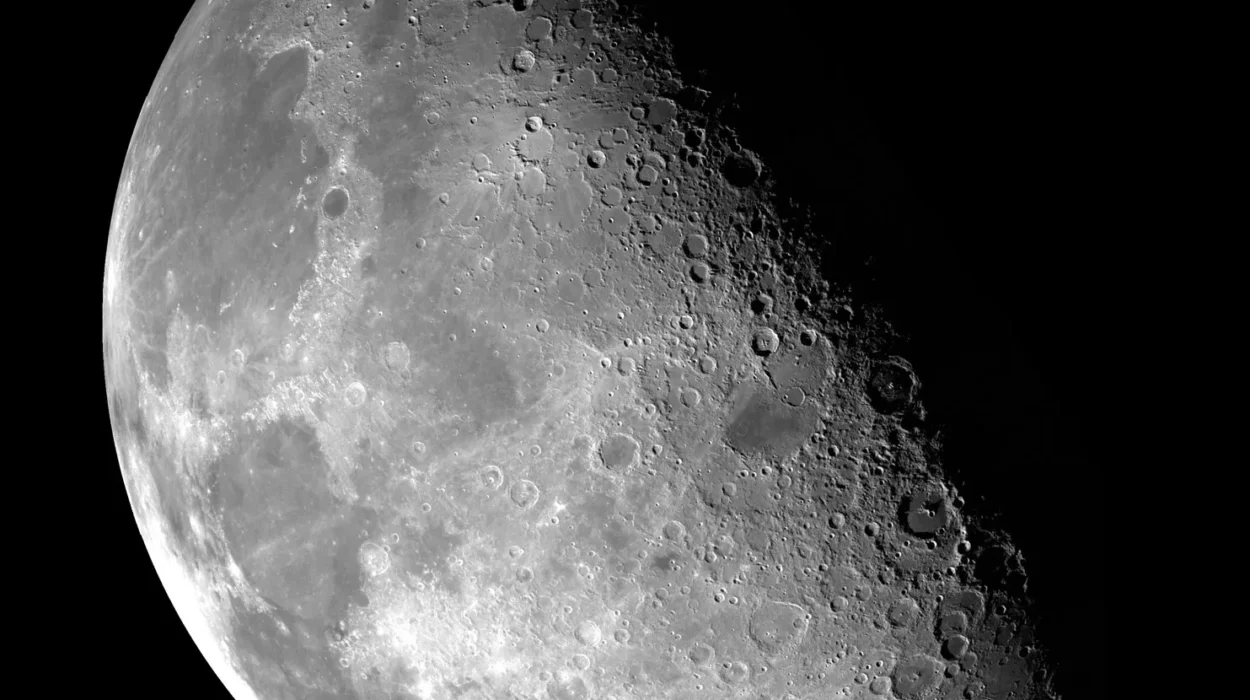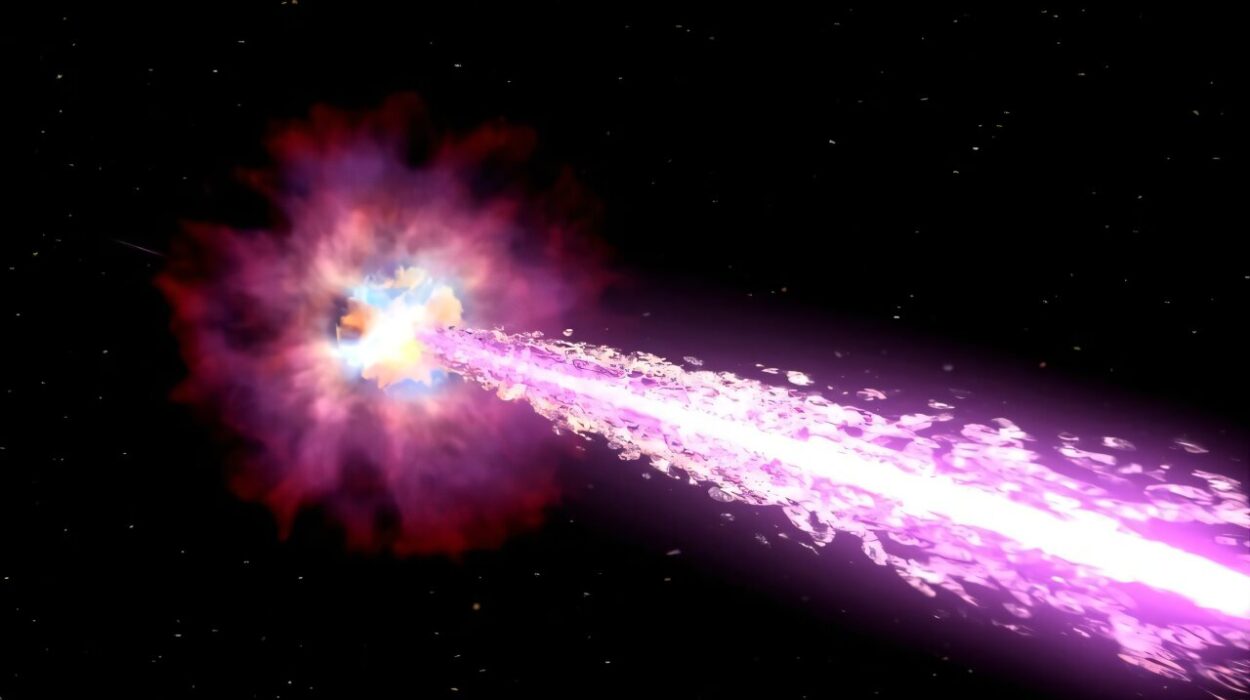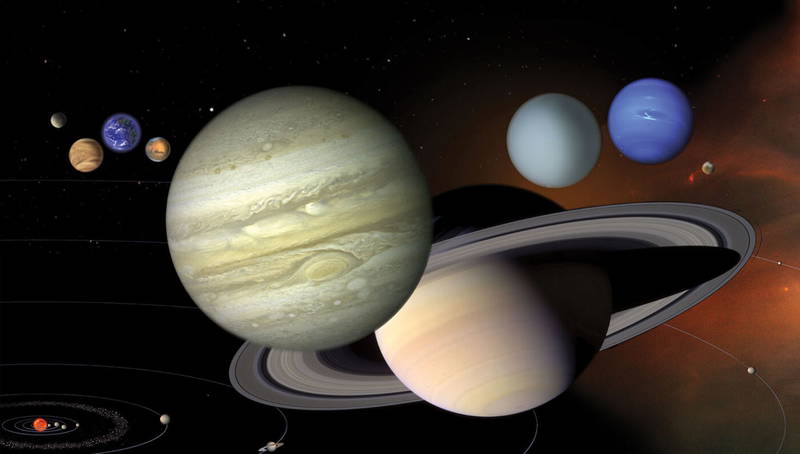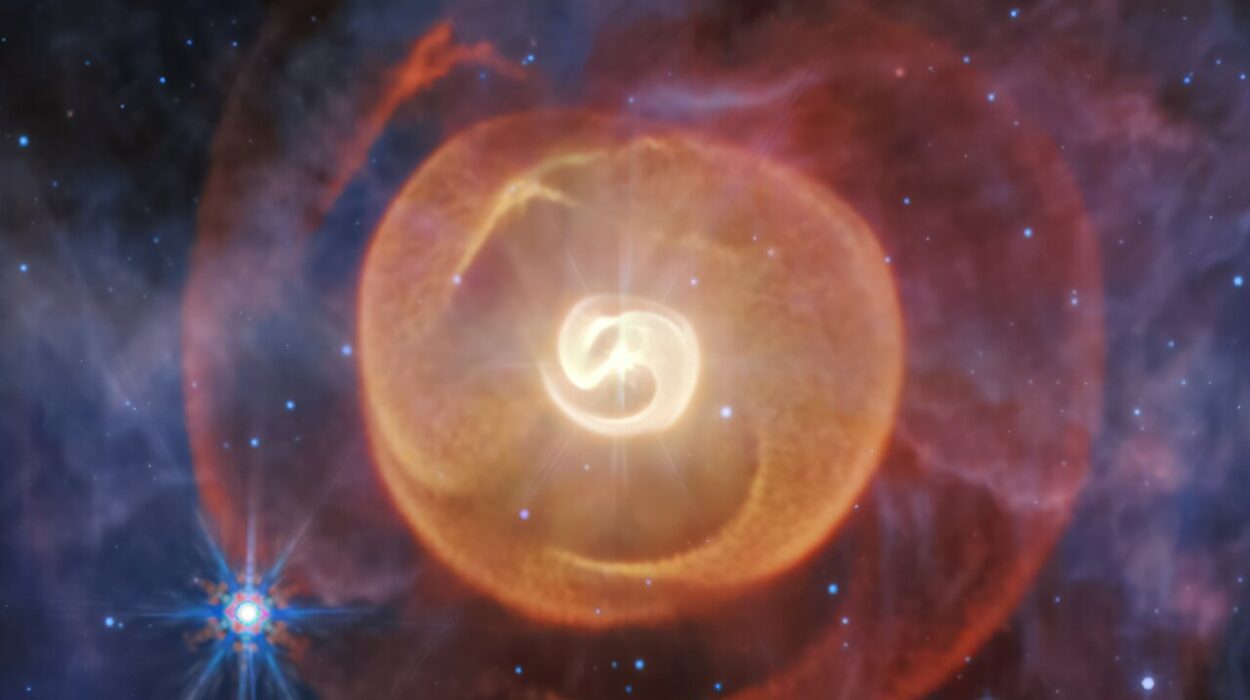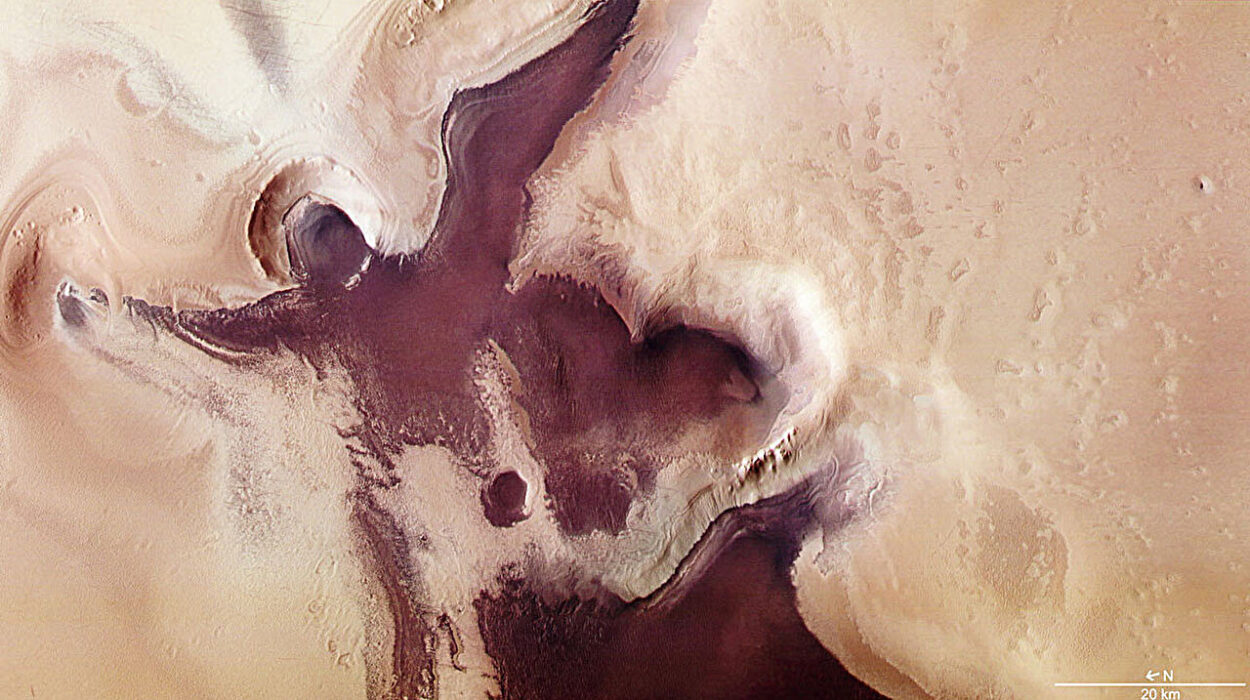For the first time in human history, astronomers are witnessing the universe’s adolescence—not through imagination or simulation, but through direct observation. Using the James Webb Space Telescope (JWST), scientists have captured the most detailed glimpse yet into how galaxies first formed after the Big Bang. What they found was not the orderly, elegant spirals we know today, but something far more primal: a universe filled with chaotic, clumpy, and turbulent young galaxies struggling to find their form.
These findings, led by researchers from the University of Cambridge, have shaken our assumptions about the early cosmos. Instead of seeing galaxies as neat, well-structured systems, scientists discovered that the first galactic generations were more like cosmic storms—swirling with gas, dust, and newborn stars, constantly colliding and reshaping themselves in the violent theater of creation.
Peering Back in Time
Light travels at a finite speed. That means when we observe distant galaxies, we are literally looking into the past. The JWST, humanity’s most advanced eye on the cosmos, allows us to peer back over 13 billion years—into a time when the universe was less than a billion years old.
The research team analyzed more than 250 young galaxies that existed between 800 million and 1.5 billion years after the Big Bang. These were the cosmic infants, the first structures to emerge after the “dark ages” of the universe, when the first stars had just begun to ignite.
By studying how gas moved inside these galaxies, the researchers could trace their internal structure. What they saw was astonishing: most of these galaxies were not yet the calm, rotating disks we associate with mature systems like the Milky Way. Instead, they were messy, unpredictable, and brimming with energy.
Galaxies in Turmoil
“The picture that emerges is one of a universe that was restless and alive,” said Lola Danhaive, the study’s lead author from Cambridge’s Kavli Institute for Cosmology. “We found that most early galaxies were turbulent and chaotic, their gas moving in all directions instead of settling into neat, rotating disks.”
The JWST’s Near-Infrared Camera (NIRCam) was used in a special “grism mode,” which can detect faint light emitted by ionized hydrogen gas—the glowing footprints of star formation. This data allowed scientists to map the motion of gas inside each galaxy, revealing a pattern of turbulence that speaks to the universe’s youth and violence.
Many galaxies appeared clumpy, their gas puffed up like smoke in a storm. Some showed signs of beginning to rotate, hinting at the eventual order that would emerge over billions of years. But most were still struggling against the gravitational chaos that defined their early lives.
The Struggle for Order
It may be tempting to think of galaxies as eternal, unchanging pinwheels of light. But the JWST’s findings show that they are more like living beings, evolving and transforming through time. In the early universe, gravity, radiation, and star formation worked together—and often against each other—to shape these fledgling systems.
Star formation itself was both a creative and destructive force. New stars exploded into existence, heating surrounding gas and driving it outward, stirring turbulence that made it difficult for galaxies to settle. Gravitational instabilities caused clouds of gas to collapse unevenly, forming lopsided structures and clumps that collided and merged again and again.
“This work helps bridge the gap between the epoch of reionization and the cosmic noon,” explained Danhaive, referring to the period when star formation across the universe reached its peak. “We can now see how the first building blocks of galaxies began to settle down, transitioning from chaotic clumps into the ordered spirals we see today.”
A Universe in Motion
The findings also help reconcile previous discrepancies between theory and observation. Earlier studies, based on limited data, had suggested that large, well-ordered galaxies appeared surprisingly early—something that didn’t match the predictions of cosmological models.
“But by looking at hundreds of galaxies instead of a handful, and especially those with lower masses, we finally see the bigger picture,” said co-author Dr. Sandro Tacchella from the Cavendish Laboratory. “Early galaxies were messy and unstable. They grew by merging with one another and by undergoing bursts of star formation. Over time, they evolved into the more organized systems we know today.”
In other words, the calm and graceful spiral of the Milky Way is the result of billions of years of cosmic growth and balance—a long journey from a violent, chaotic youth.
The Power of JWST
The James Webb Space Telescope has revolutionized astronomy in ways scientists are only beginning to grasp. Its powerful infrared vision allows it to see through cosmic dust and detect the faint light of the earliest galaxies—light that has been traveling for billions of years, stretched into infrared wavelengths by the expansion of the universe.
For this study, JWST’s NIRCam was pushed to its limits. The researchers used it to collect the delicate signatures of hydrogen gas, then wrote custom computer code to analyze those signals. By comparing this information with images from other JWST surveys, they were able to map how gas was moving within each galaxy—a feat that was impossible with previous telescopes.
The result is a new kind of cosmic cartography: a detailed map of the early universe’s restless heart.
Turbulence as the Seed of Creation
What may seem like chaos at first glance is, in fact, the creative engine of the universe. The turbulence in these young galaxies played a vital role in shaping them. Colliding gas clouds sparked waves of star formation. Gravitational instabilities led to the birth of dense regions that would later become galactic centers.
Every supernova explosion, every shockwave of radiation, contributed to a process that eventually brought order from disorder. Over time, as gas cooled and gravitational forces stabilized, galaxies began to flatten into rotating disks. Stars gathered into structured arms. Black holes grew in their centers, anchoring the galaxies that formed around them.
The early universe, it seems, was not a quiet cradle but a cosmic forge—loud, violent, and full of creative energy.
From Chaos to Harmony
When we look up at the Milky Way today, stretching like a band of silver across the night sky, it’s easy to forget that our galaxy was once a chaotic, youthful storm. The JWST’s findings remind us that cosmic beauty is born through struggle. Order is not the universe’s default state—it is an achievement, the outcome of eons of turbulence settling into harmony.
The galaxies JWST has revealed are snapshots of the universe learning to organize itself. Each one tells a story of gravity wrestling with chaos, of light emerging from darkness, of structure rising from the raw material of the cosmos.
“This is just the beginning,” said Tacchella. “With more data, we’ll be able to track how these turbulent systems matured into the graceful spirals and ellipticals we see in the modern universe.”
More information: Lola Danhaive et al, The dawn of disks: unveiling the turbulent ionised gas kinematics of the galaxy population at 𝑧 ∼ 4 − 6 with JWST/NIRCam grism spectroscopy, Monthly Notices of the Royal Astronomical Society (2025). DOI: 10.1093/mnras/staf1540
